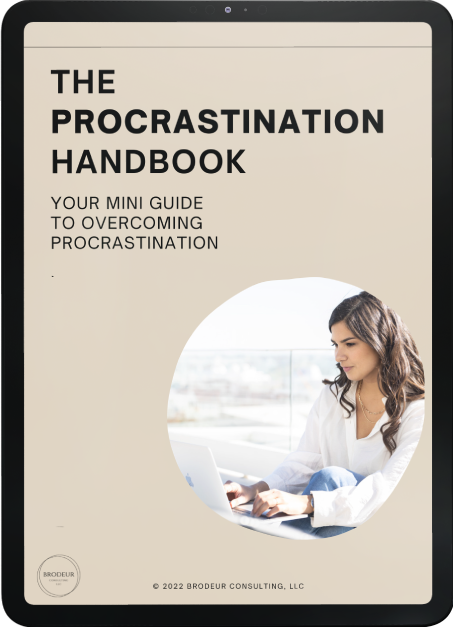Of course, in the long term, this usually leads to negative consequences. The longer a task goes unaddressed, the more these uncomfortable feelings build. Procrastination causes stress and anxiety since procrastinators tend to cram all the work that needs to be done in a short, unrealistic, and almost impossible scale.
How do you prevent procrastination from happening?
If you’re reading this blog, my guess is that you’ve already heard of strategies like breaking tasks into smaller pieces, setting deadlines, starting your most challenging task first, or time-blocking your schedule. These are helpful, however, they are bandaid solutions to a much larger problem. Task management strategies are not as effective without also addressing the uncomfortable feelings you are avoiding.
How do you address the uncomfortable feelings you are avoiding?
Most are not taught how to process emotions growing up, but it is never too late to learn. The saying is: “What you resist persists.” The longer you avoid emotions you don’t want to feel, such as anxiety, the longer it stays around.
First, acknowledge it’s okay to feel whatever way you are feeling. You can’t control what emotions come up. There are no negative emotions, they are all part of life. To feel through these emotions and process them, first focus on your breath. It is underrated and not enough to do it, but your breath is key.
As you focus on deep breathing, begin to examine where you are feeling this tension in your body. Is it in your belly? Do you feel pressure in your throat or chest? Locate and connect with where you are experiencing these emotions.
Then begin to examine and redirect your thoughts. Your thoughts and feelings have a close relationship. If you are telling yourself, “I don’t want to feel this, I want to run away from this,” that is what your body is going to do and it’s going to numb the feeling by scrolling through cat videos or checking your inbox for the 20th time today. Tell yourself, “I am willing to feel this discomfort in order to complete my task. It is temporary and I will be okay.”
To learn about this more, download your free copy of my Procrastination Handbook by clicking below:
What will have the biggest impact on going from a chronic procrastinator to a get-stuff-done type of person?
We’ve covered how to shrink the task so it feels more approachable, as well as how to handle the uncomfortable feelings you’ve been avoiding. What will be most helpful in the long run is lessening your fears. The more fears you leave unmanaged, the higher likelihood they will block your actions.
A business owner who fears releasing control, will feel resistant to delegating tasks and likely have too much on their plate. Someone who wants to start a side project but fears failure and embarrassment will avoid taking steps to put their product or service out there.
Even if you’ve been procrastinating since grade school, this habit can be overcome. It might not feel that way, since the solutions you’ve tried so far have not worked. It’s about being patient with yourself, understanding the deeper reasons behind procrastination, and realizing that there are different strategies that can help you overcome it. Creating a to-do list, breaking tasks into smaller pieces, and setting realistic deadlines will partially help, but that alone won’t be enough. Processing the emotions you are experiencing and addressing the deeper fears that are holding back your progress will.
For a step-by-step guide on how to implement some of these strategies, download your free copy of my Procrastination Handbook by clicking below:

